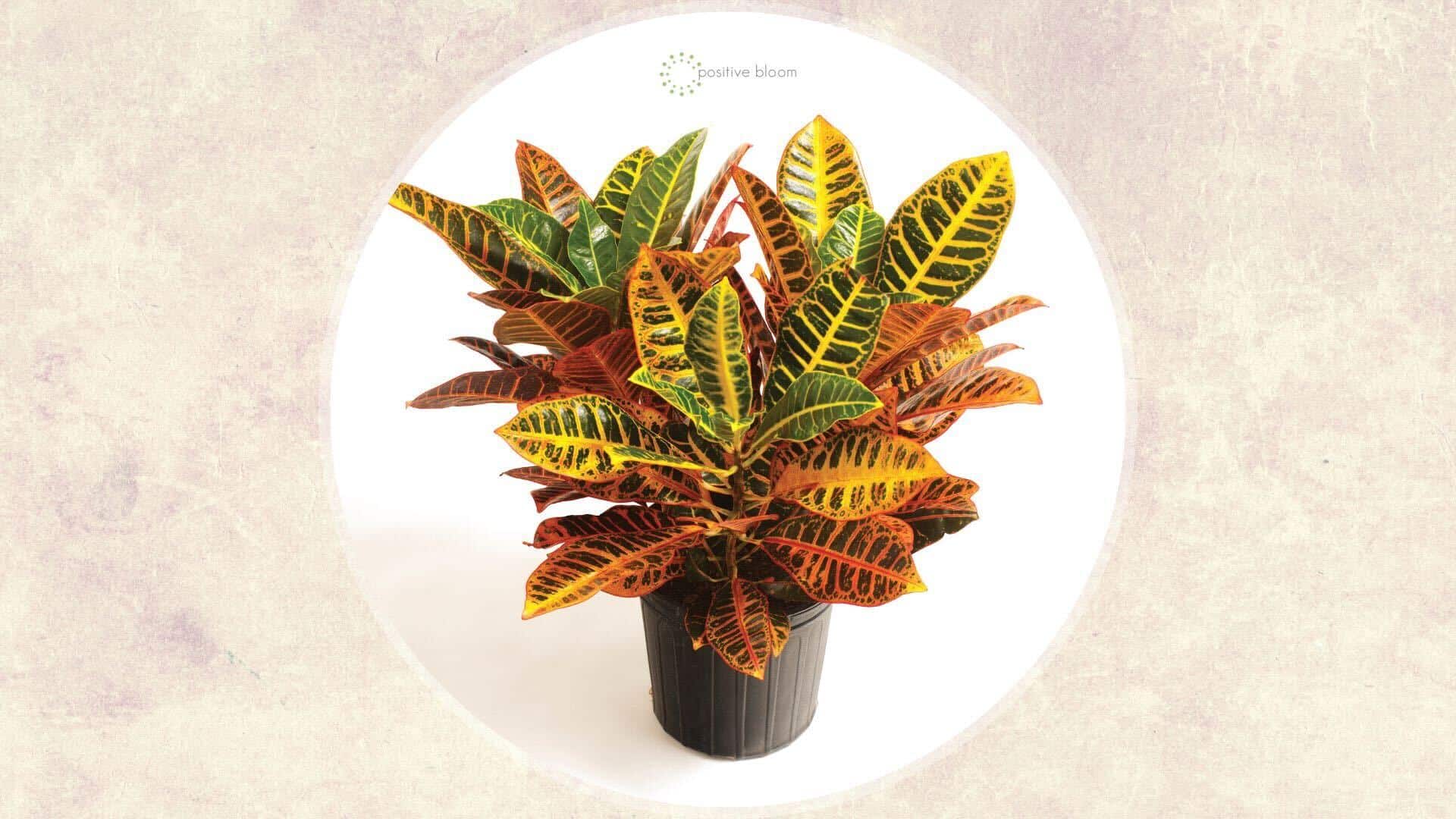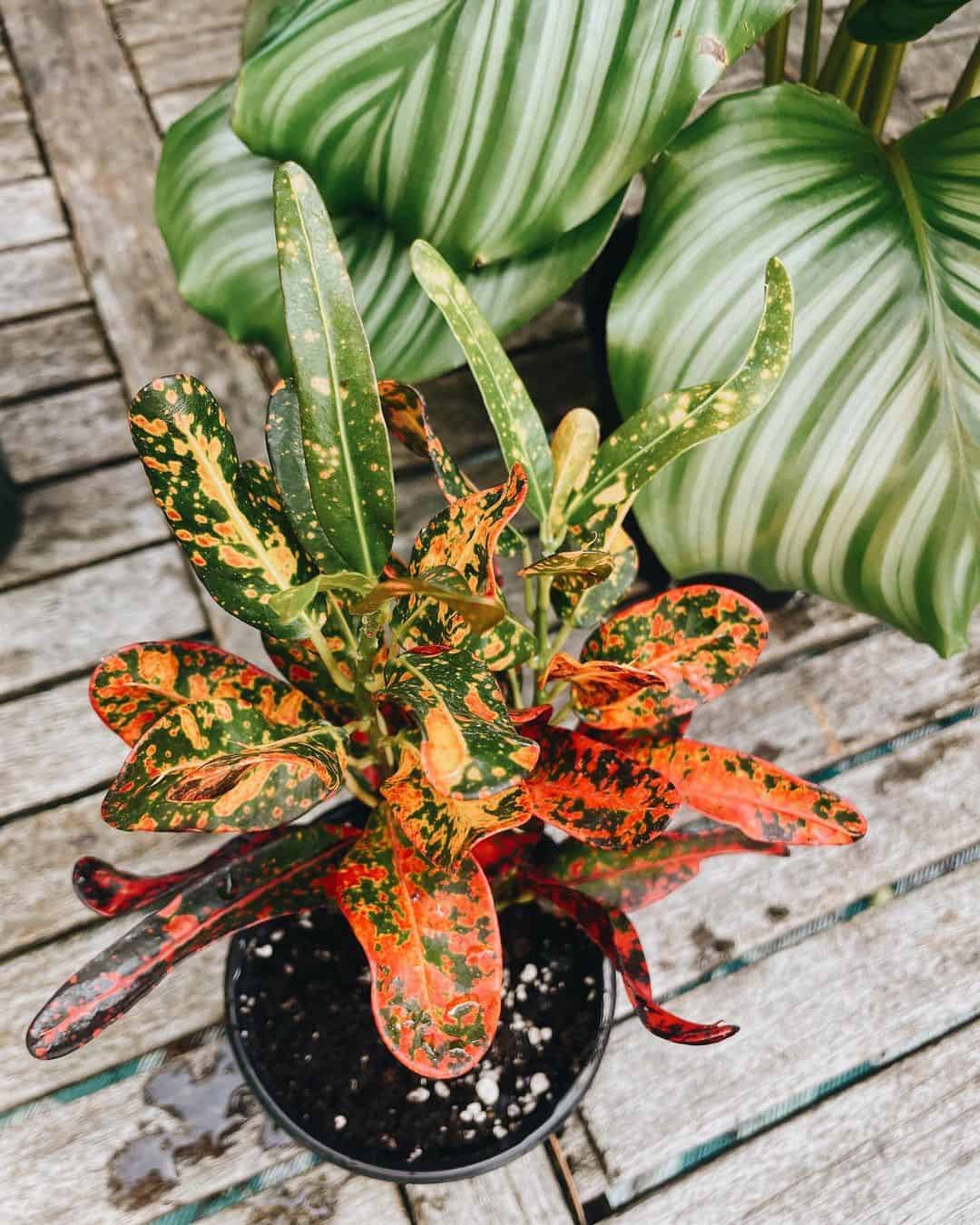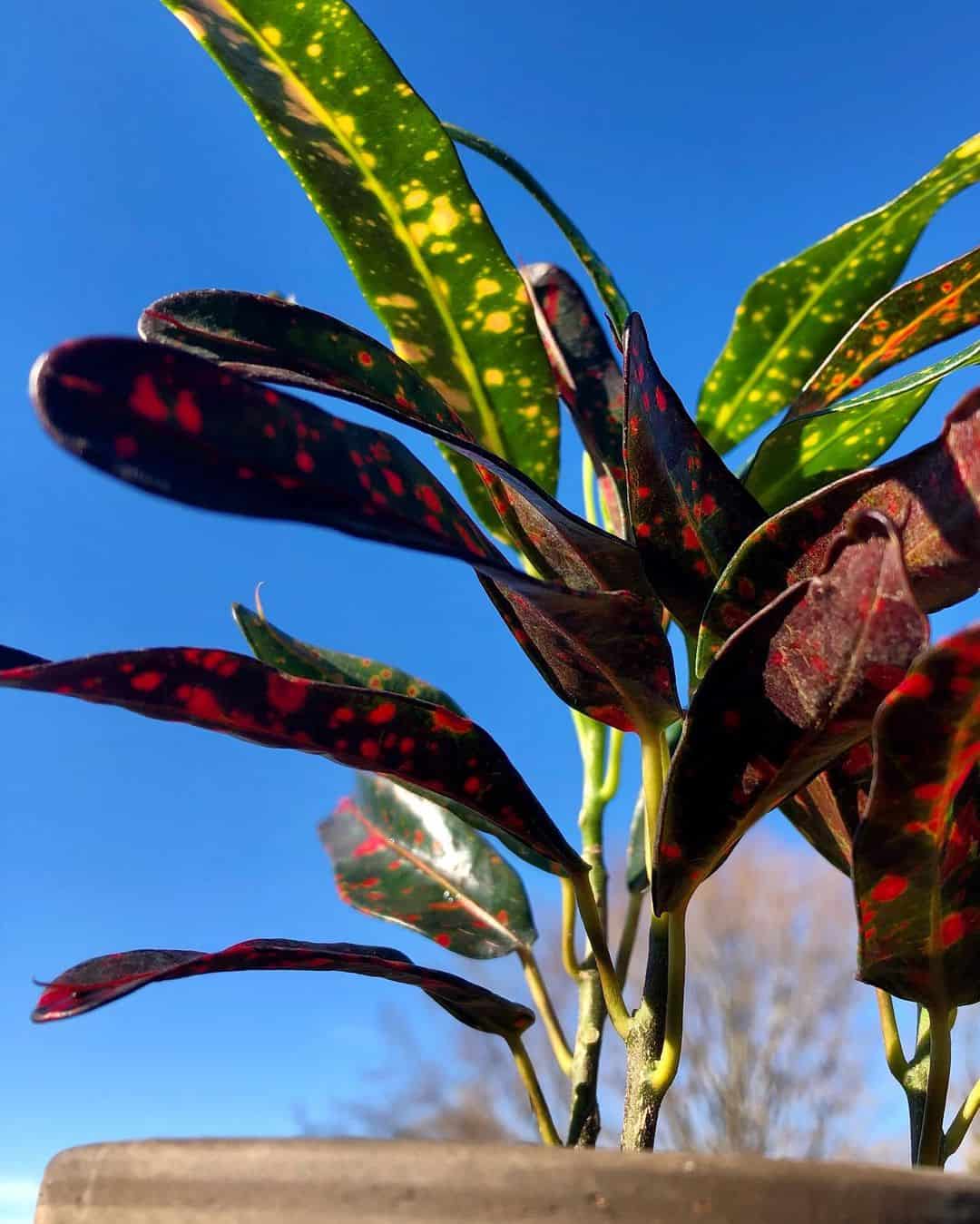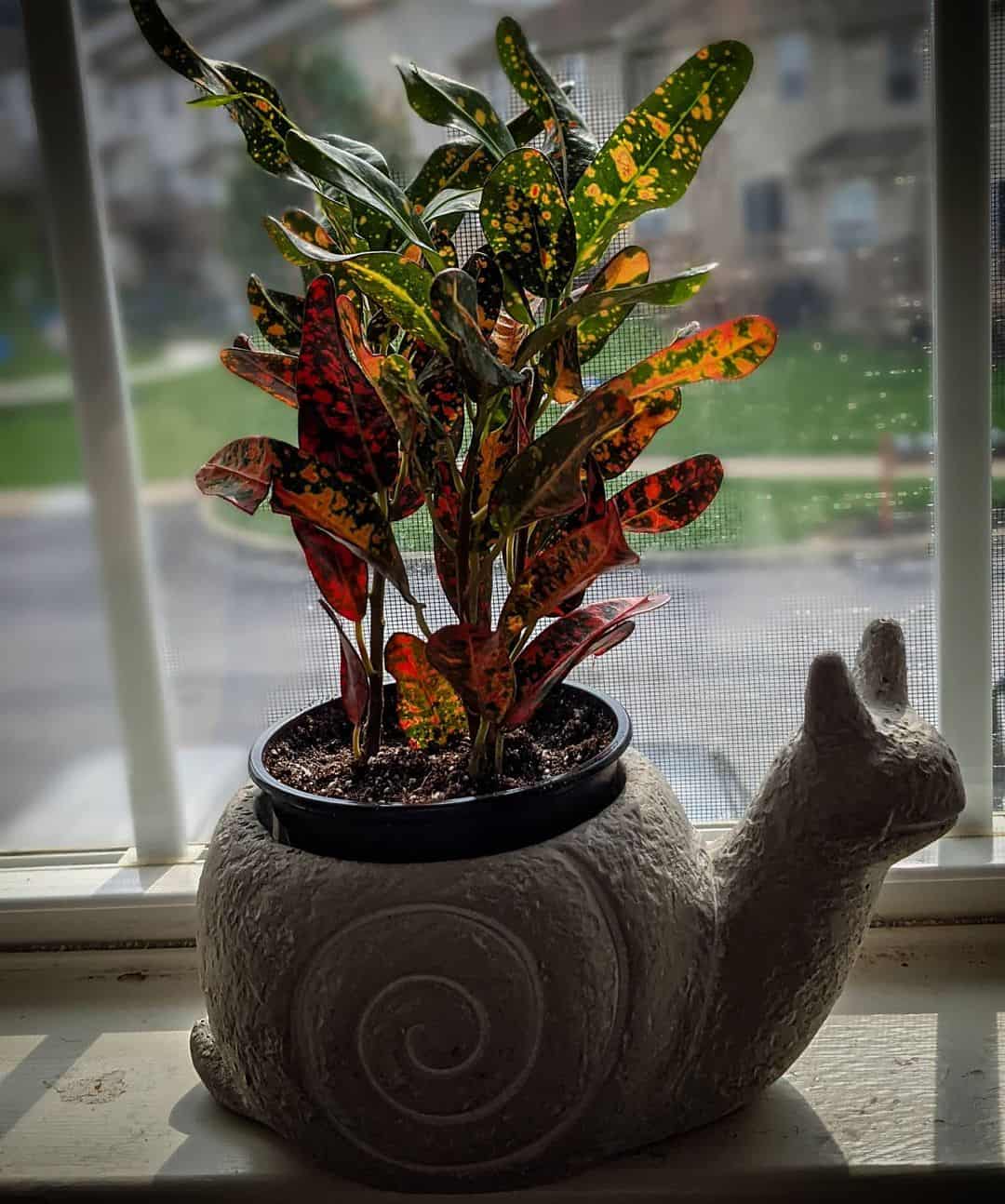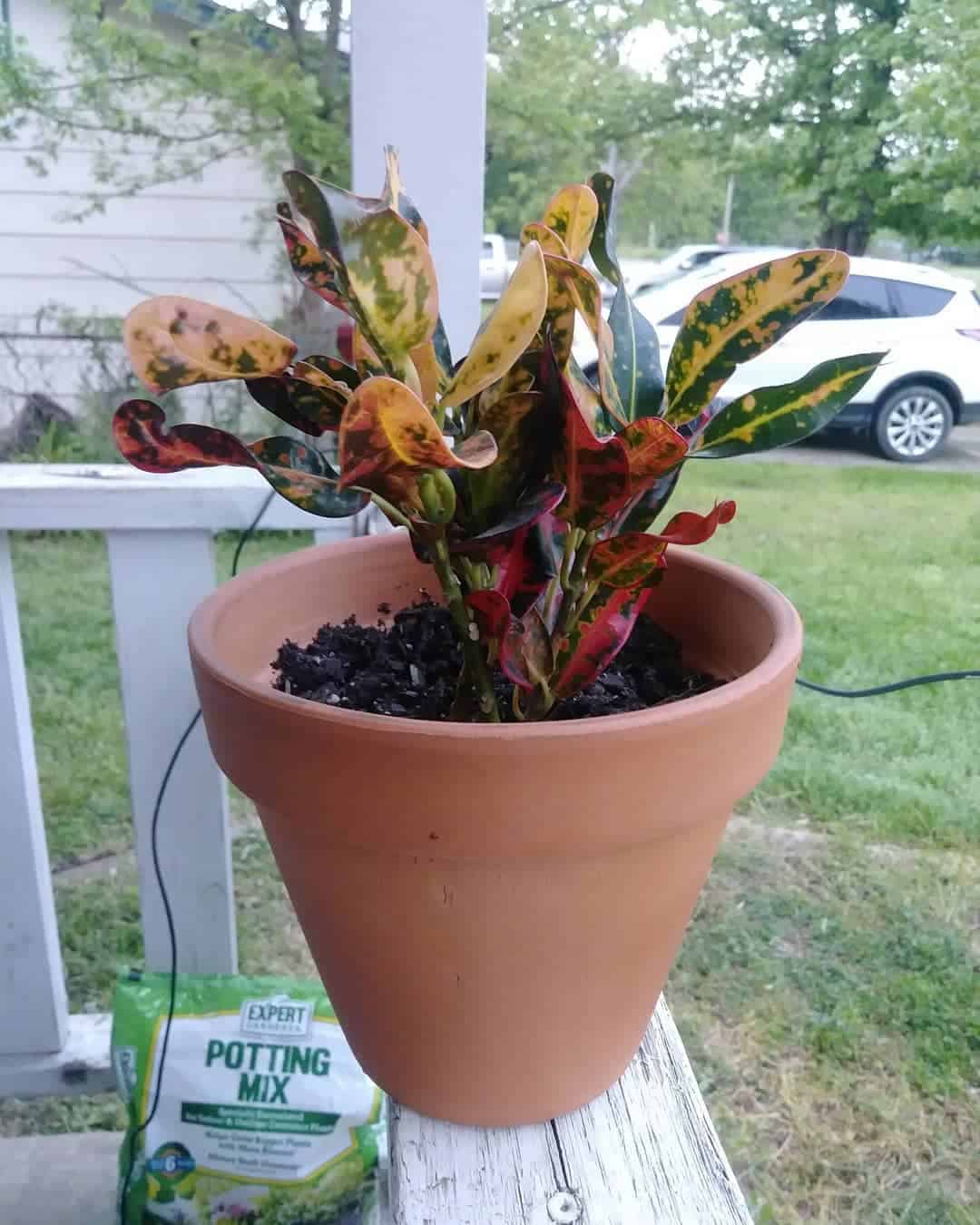Choosing houseplants isn’t always an easy task, but if you’re into colorful variegated plants, I have the perfect plant for you! Meet the Bush On Fire croton; a lovely cultivar from the Codiaeum genus.
Crotons are frequently seen in the houseplant collections of experienced gardeners. This tells us one thing; these specimens aren’t the easiest to care for, but that shouldn’t stop you from growing them.
I prepared a complete care guide for this croton plant, and if you follow it, your croton will grow just fine!
In this article, you’ll also find information about Bush On Fire plant propagation, as well as some issues you may encounter.
Before we move on, here’s some basic info about Bush On Fire croton.
[table id=626 /]
Let’s get started!
What Is The Bush On Fire Croton?
Crotons belong to the Euphorbiaceae family and are part of the Codiaeum genus. There are plenty of species in the genus, and the common garden croton, Bush on fire, and Croton petra are the most popular ones.
The scientific name for this plant is Codiaeum variegatum Bush On Fire, which means this is a variegated plant.
What’s fascinating about this variety is the combination of colors on the foliage. Shades of green, red, yellow, and gold can be seen on each leaf.
When grown as an indoor plant, this Codiaeum plant typically reaches 6 feet tall.
This is a tropical plant, and unlike other common low-maintenance houseplants, it may be a little bit fussy.
So, let’s look at the care requirements of this Croton.
Bush On Fire Plant Care Guide
If you grow this Codiaeum plant indoors, the conditions must resemble those found in tropical areas. This is the reason this plant isn’t thought of as easy-to-maintain.
Here’s a table with an overview of the care requirements of the Bush on Fire plant.
[table id=627 /]
Let’s get into details!
Light Requirements
Adequate light levels are crucial because it has the greatest impact on the stunning foliage. This Coediadium plant must spend at least six hours in bright light each day.
But remember, direct sunlight can damage foliage, so you need to find a spot that receives bright indirect light.
This plant grows well if placed near windows with a southern exposure; if sun rays reach leaves, put sheer curtains on windows.
The Bush on Fire is a variegated species, so it won’t withstand a lack of sunlight.
If you can’t find a spot near a sunny window, you can use artificial lights.
Temperature & Humidity Requirements
The fact that tropical climates are warm means that this plant will thrive in high temperatures.
Just try your best to maintain a temperature above 60 degrees. Remember that your plant can suffer damage from temperatures above 80 degrees Fahrenheit.
It’s essential to keep this croton plant away from heating sources such as radiators and fireplaces. Additionally, this plant is sensitive to cold drafts, which means you should never place it near drafty windows.
Humidity
Codiaeum plants enjoy high humidity levels. The main reason for this is that the plant is native to tropical climates.
Low humidity can affect the health of your plant. Foliage may start falling off and growth, in general, can be inhibited.
You’ll need to increase the humidity. There are several methods for raising humidity levels, some of which are simple and natural.
The first and most effective one is installing a humidifier. The truth is that these devices can be pricey and need maintenance, but since they work perfectly, the investment pays off.
Other methods include using humidity trays, grouping your houseplants, or moving them to a kitchen or bathroom.
Plant growers often use misting to raise humidity; it can help you if humidity levels need to be slightly increased.
What Type Of Soil Does A Bush On Fire Croton Like?
The soil requirements of this plant are the same as those of other tropical plants. Using well-draining soil is the best way to avoid the accumulation of excess water.
Root rot is probably the worst thing that can happen to your Codiaeum variegatum plant. Excess water in the potting soil leads to severe damage to the root system.
The main problem with this fungal disease is that it quickly kills plants.
Coco coir, orchid bark, and perlite will enhance drainage in the soil mix. You can also mix peat moss as it retains water, which will keep the soil sufficiently moist.
The growing medium needs to be enriched with organic matter, such as hummus.
The combination of these materials will promote growth and prevent damage.
When And How To Water The Bush On Fire
The most confusing thing for novice gardeners is learning how to keep the soil constantly saturated without waterlogging it.
Well-draining materials and drainage holes will help you get rid of the excess water, while water-retaining materials will keep soil well-moisturized.
Before you irrigate this Codiaeum variegatum plant, you need to check if it really needs water. Put your finger in the growing medium, and if an inch or two below the soil line is dry, proceed with irrigation.
Remember that you’ll need to check moisture in the growing medium more often in summer, as high temperatures enhance water evaporation rate.
This means you don’t need to water your Codiaeum plant too often in the winter because it’s not actively growing and the water evaporation rate is low.
Use room temperature water and avoid watering the foliage; aim for soil only.
Fertilizing
If you want to preserve leaf colors and the overall health of the plant, you need to fertilize it.
You have two options when it comes to fertilizing these tropical plants. The first one is applying granular fertilizers at the beginning, middle, and end of the growing season.
The second option is using liquid plant food; apply it on a monthly basis, but only during the growing season.
These plants benefit most from fertilizers rich in nitrogen. For Codiaeum plants, growers also use plant food with a 3-1-2 NPK ratio.
Pruning
These plants are frequently trimmed to promote healthy growth, as well as to preserve a certain plant shape.
To eliminate any rotten or dying leaves, use a sanitized pair of scissors.
By trimming the stems, you promote branching and create the impression of a bushier plant.
Repotting
One of the reasons plants display stunted growth is because they need to be repotted. If your croton struggles with growing, check if the roots are poking through drainage holes.
If so, it’s time to change the pot and refresh the soil for your Codiaeum variegatum plant.
Prepare fresh potting soil and a pot one size larger. Take your croton out of its pot by tipping it to one side and sliding it out.
Fill the bottom half of your new pot with growing medium, and put your green friend in the center. Add more soil until the root system is entirely covered.
Irrigate the plant and move it to a spot with bright light.
Codiaeum Variegatum Propagation Methods
Getting new Codiaeum plants isn’t a hard task. The Air layering and stem cutting propagation methods have high success rates and don’t require special gardening skills.
I highly recommend using gloves when propagating or doing anything with this plant; the sap might cause a skin irritation, so better safe than sorry!
Let’s look at both methods.
Propagation By Air Layering
Here are the steps for the air layering method.
1. Choose a spot on the stem a few inches below the tip. Go with parts that have leaves or nodes.
2. Make an incision that’s approximately 2 inches in length starting below the node. To keep the cut open, insert a toothpick and put rooting hormone into the hole.
3. Squeeze the sphagnum moss to get rid of the excess water. Cover the opening with sphagnum moss and secure it with twines.
4. Wrap everything in a plastic bag, leaving a hole on the top.
6. Moisten the sphagnum moss occasionally, or whenever it feels dry.
7. Wait until the roots are about two inches long and poking through the sphagnum moss.
8. Snip the stem of your croton just below the roots, and then take off the plastic bag.
9. Transplant the cutting into a growing medium, but don’t remove the sphagnum moss.
Stem Cuttings
Here are the steps for the stem cutting propagation method.
1. Cut off about 4 inches of the stem above the node; aim for a part with a few leaves.
2. Apply rooting hormone to the cut.
3. Fill your nursery pot with a growing medium and make a hole about an inch deep. Insert the cutting and transfer the nursery pot to a well-lit area.
4. Keep the potting soil saturated and maintain humidity; placing a plastic bag over the cutting has proven to be an excellent method of maintaining the correct humidity levels.
5. Croton cuttings typically need a month to develop new roots. New growth is the best indicator of a successfully rooted cutting.
6. Transplant the rooted cutting to a larger pot and ensure all the necessary conditions.
Common Issues With The Bush On Fire Croton Plant
What can go wrong with this Codiaeum variegatum plant? A few insects can be found sucking the sap of your plant for one thing.
Diseases and leaf discoloration or dropping are other potential problems.
Let’s find out more!
Pests & Diseases
Codiaeum variegatum plants aren’t immune to common indoor plant pests such as mealybugs, spider mites, or thrips. If you notice any of these insects, apply an insecticidal soap solution.
You should use pesticides only if the infestation is severe and none of the other natural methods work.
This plant is frequently afflicted with the bacterial ailment known as crown gall. The tell-tale sign of this disease is the occurrence of dense, swollen growth.
If your Codiaeum plant suffers from this disease, it is advised to dispose of it. The possibility that the disease will affect your other houseplants is really high.
If you overwater your plant, it will most likely develop a fungal disease that causes the roots to rot. If you notice any symptoms of root rot, repot the plant ASAP.
Leaf Discoloration & Deformation
Multicolored leaves can appear gray if the temperatures are too high. You’ll need to keep your plant hydrated all the time.
On the other hand, low temperatures cause this croton plant to lose its beautiful leaves. You need to move your plant to a warmer spot in this case.
Curling and wilting occur as a response to low moisture levels in the growing medium.
Wrapping Up
If you were looking for an exotic plant for your collection, I’m sure the Bush on Fire croton is now on your wishlist!
Even though this plant can be fussy over growing conditions, you can keep it healthy and happy using our care guide.
Take good care of your Bush on Fire, and enjoy its unique leaves!
Until next time!

